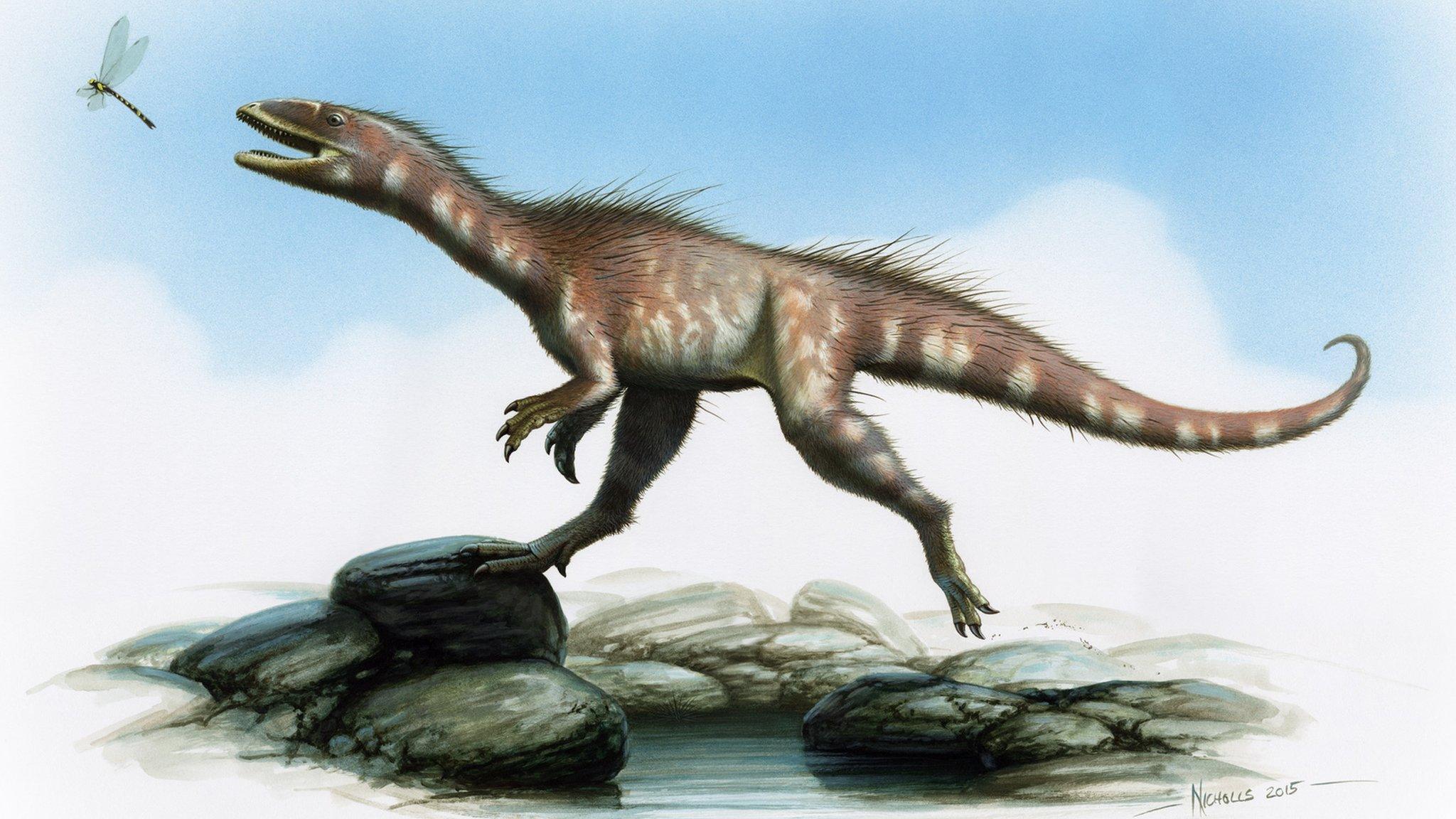Penarth 'dinosaur footprints' investigated by museum
- Published
The "footprints" have been found on the beach in Penarth
Newly revealed "footprints" thought to be Wales' latest dinosaur find are being investigated by researchers from the Natural History Museum.
They are imprinted on rock at the beach in Penarth, Vale of Glamorgan.
Prehistoric finds have already been unearthed on the same section of coastline, including that of a distant cousin of Tyrannosaurus rex in 2014.
If confirmed, researchers said the discovery would be "really, really exciting".
The prints are embedded in a section of rock previously thought to contain other fossilised tracks of a prehistoric creature.
If confirmed, they would be the third set of dinosaur tracks in Wales and a huge boost to the area's archaeological heritage, according to palaeontologist Cindy Howells, of the National Museum of Wales.
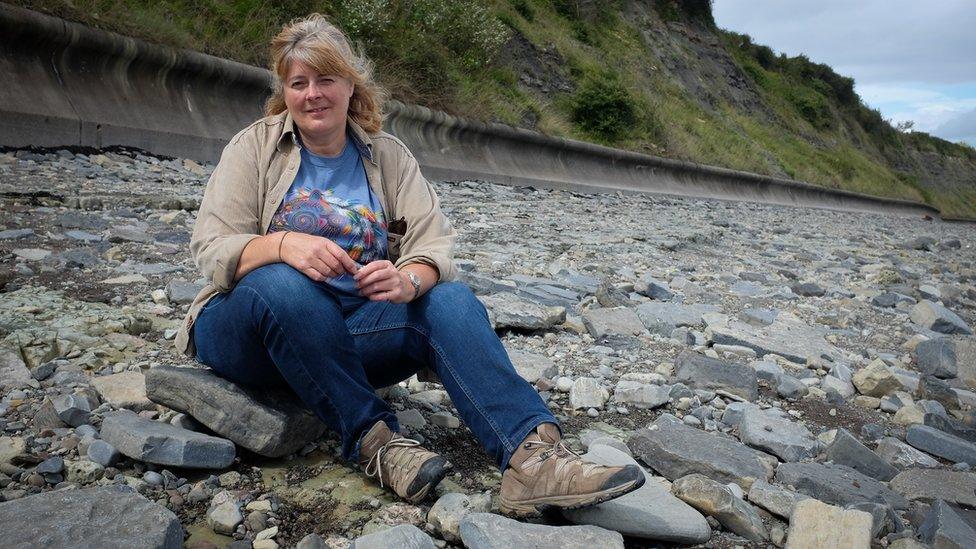
Cindy Howells believes the potential discovery could be hugely significant
"If these are indeed dinosaur footprints it's going to be really, really exciting," she said.
"The beds that we were seeing a few years back have been increased, there is even more of them now than when we first saw them a few weeks back.
"The new ones, they look better. They look more convincing to be dinosaur footprints.
"It's going to be incredibly exciting if they are proved."
The process for confirming their provenance will centre on several factors for researchers from the museum, including their regularity, stride pattern and the geological area in which they were found.
But one of the key indicators that may point towards the prints being genuine is the pattern of so-called "squelch marks".
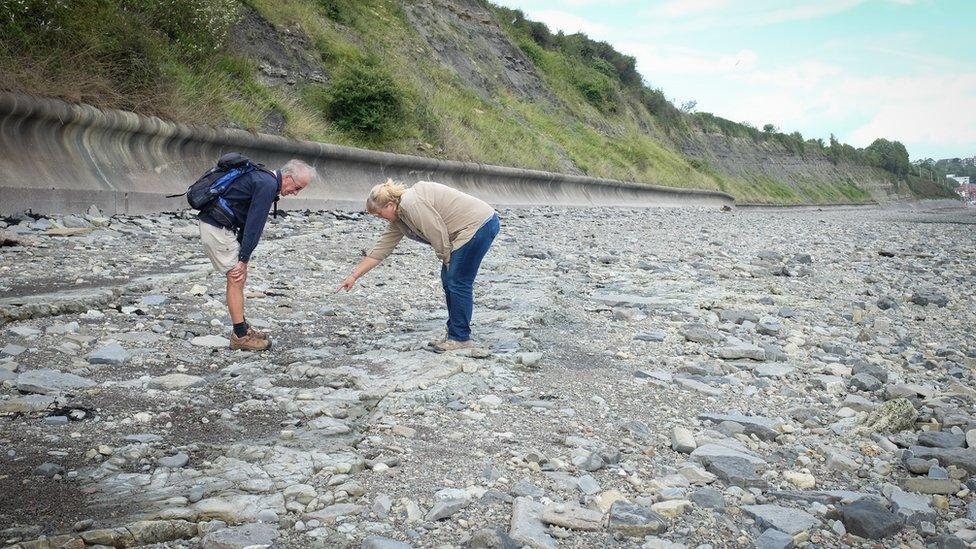
John Nudds and Cindy Howells run the rule over the prints
"If you can't see the specific shape, quite often you'll look for other features, like the fact that you get one or two footprints in a left-right pattern," Ms Howells said.
"You also look for the size and shape of these holes and you'll look for things like the rounded rims you've got on these, [which] we call 'squelch marks'. So as the animal is putting its feet into the clay, into the mud, the mud is rolling up around the foot.
"It's a very rare thing to find new footprints."
Uncovering evidence of prehistoric life around the cliffs in the Vale of Glamorgan is not necessarily a surprise.
Similar areas with footprints have already been verified further down the coast, near Barry and Porthcawl.
And in 2014, Wales' fossil-hunting community was treated to the discovery of Wales' first theropod skeleton at Lavernock Point by brothers Nick and Rob Hanigan.
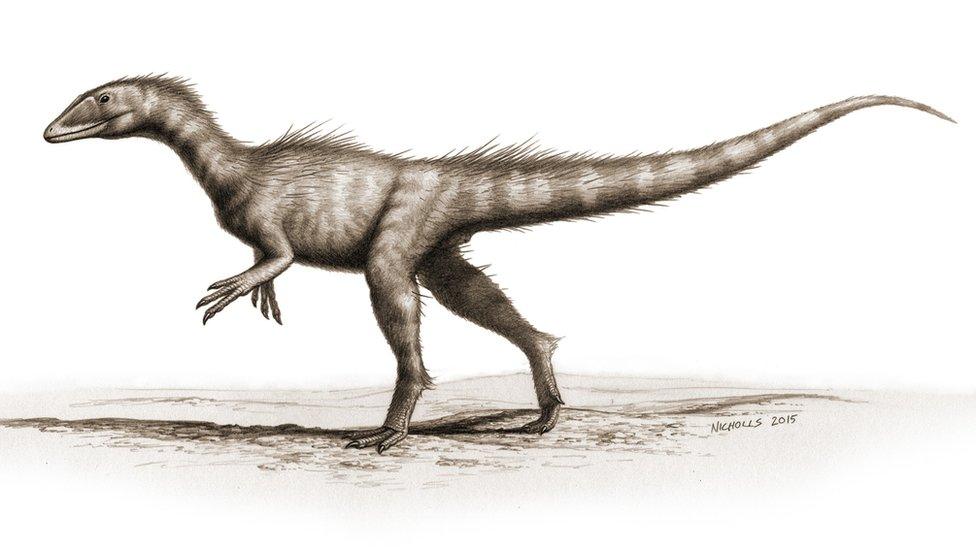
The Welsh specimen discovered in 2014 was a juvenile, measuring about 2m from nose to tail tip
It is an area that is primed for further discovery too, according to geologist John Nudd, from the University of Manchester, due to its prevalence of eroding cliffs from the fossil-rich Jurassic period.
"There are huge numbers of fossils," he said.
"Anywhere on the beach here you're bound to find bits of Jurassic rocks and you can't fail to find fossils. Every bit you look in almost has bits of fossils.
"There must be others. They will turn up one day."
Prof Paul Barrett, merit researcher at the Natural History Museum in London, said credit for the find went to a local woman, Kerry Rees.
"Kerry sent the museum some pictures of a possible dinosaur trackway that had been uncovered following some very high tides and we decided that it would be interesting to check them out," he said.
"Kerry found a series of large indentations on the beach - these are deep, round in outline and bear many of the hallmarks of dinosaur tracks, as they seem to be regularly spaced and have raised mud rims like those that form as a foot pushes into wet mud or sand."
The museum hopes to have a definitive answer on whether the marks are dinosaur tracks soon.
His colleague Dr Susannah Maidment said that if the tracks were confirmed, they would be among some of the oldest evidence of dinosaurs in the UK.
"Other trackways of similar age, and one good dinosaur skeleton, have been found a few miles along the coast, near Barry, so south Wales was a busy area for dinosaurs at the time," she added.
- Published20 January 2016
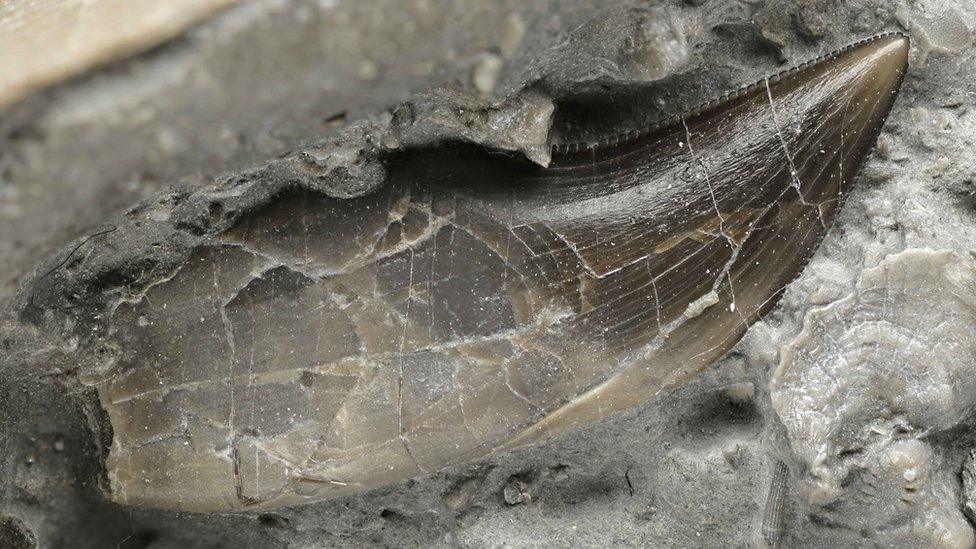
- Published20 January 2016
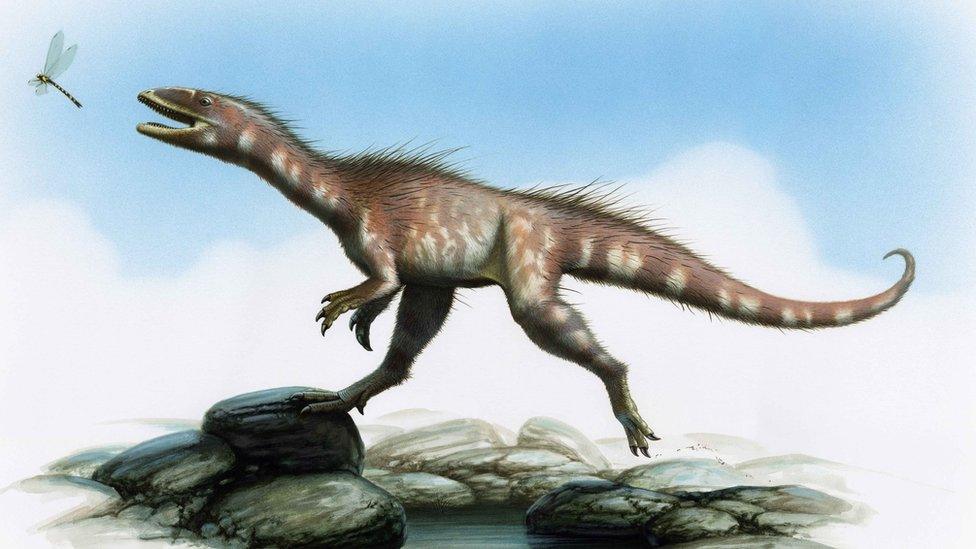
- Published26 August 2015
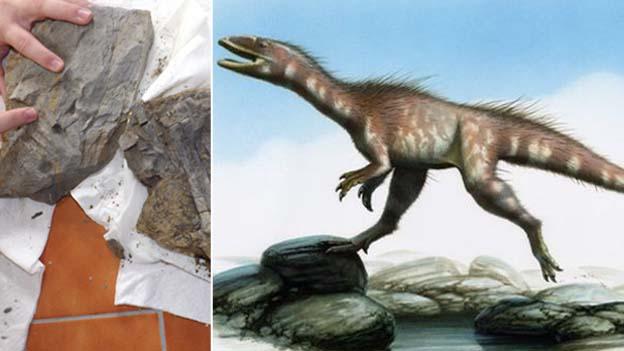
- Published9 June 2015
